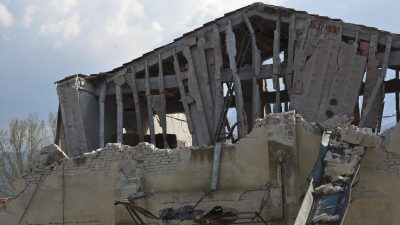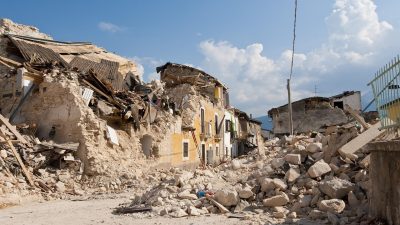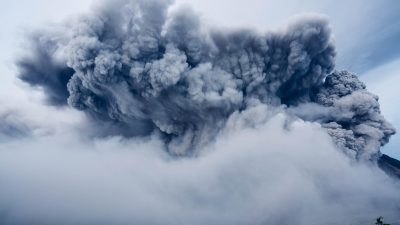Uncovering The Untold Devastation That Shook India And China
The Earth Shook: How the 1950 Assam-Tibet Earthquake Changed Everything
On August 15, 1950, the earth beneath the Assam-Tibet region of India and China violently shifted, triggering one of the most devastating earthquakes in modern history. With a magnitude of 8.6, it left a deep scar on both the region and the collective memory of its people. As the tectonic plates beneath the Himalayas jolted, the quake wreaked havoc on the landscape, infrastructures, and human lives across an area stretching from India to Tibet. What many don’t realise is that the 1950 Assam-Tibet Earthquake not only caused immediate destruction but also reshaped the future of disaster response and recovery for both nations.
The event’s impact rippled far beyond the epicentre. Entire villages were reduced to rubble, hundreds of thousands of lives were impacted, and the earthquake’s effects were felt across national borders. In addition to the destruction, the event highlighted the vulnerabilities of an unprepared population in the face of an unpredictable natural disaster. For many, it was a stark reminder of the destructive power of nature and the urgent need for effective disaster management and infrastructure resilience.
The Untold Truth Behind the 1950 Assam-Tibet Earthquake Disaster
The full extent of the 1950 Assam-Tibet Earthquake has not been widely publicised, partly because of political tensions and communication barriers at the time. Official reports from both India and China downplayed the scale of the devastation, leaving much of the disaster’s long-term effects underreported. However, survivors tell a different story, one of chaos, fear, and unimaginable destruction. At the epicentre, in the eastern Himalayas, entire mountain ranges shifted, causing landslides that blocked rivers, creating temporary dams and leading to the risk of catastrophic flooding.
In India, the eastern state of Assam, already struggling with its remote geographical location, was hit hardest. Villages in Assam were obliterated, and thousands of families lost their homes. On the Tibetan side, the quake severely impacted infrastructure, disrupting trade routes and transportation, further straining relations between the two countries. It was an event that, despite its magnitude, seemed to fade from global memory, overshadowed by the geopolitical climate of the time.
Shattering Lives: The Hidden Consequences of the 1950 Assam-Tibet Earthquake
- Mental Health Impact: The earthquake’s aftermath left countless survivors traumatised, with little access to mental health care or counselling. Many faced emotional scars that lingered for decades, as they were forced to rebuild their lives from scratch, often without the support systems that would have been necessary for healing.
- Loss of Livelihoods: The economic impact of the earthquake was devastating. For the local populations in Assam and Tibet, the destruction of farmland, roads, and vital infrastructure meant that thousands of families were left without sources of income. This destruction not only affected immediate recovery but also slowed the region’s growth for years to come.
- Political Ramifications: Both India and China were already tense in their relations. The 1950 Assam-Tibet Earthquake further complicated matters as the disaster crossed borders, creating new challenges for both nations. The border areas, already areas of conflict, were now marked by natural devastation, contributing to political strains that would take years to address.
Why the 1950 Assam-Tibet Earthquake Was More Destructive Than We Thought
The 1950 Assam-Tibet Earthquake is often overshadowed by more recent disasters, but it remains one of the most significant natural events in the region’s history. What makes it even more destructive than originally perceived is its timing and the vulnerability of the affected regions. Here’s why:
- Lack of Preparedness: At the time of the earthquake, neither India nor China had systems in place for such a large-scale disaster. The lack of early warning systems and preparedness led to greater loss of life and property. In the years since, both nations have worked to improve disaster preparedness, but the Assam-Tibet Earthquake highlighted critical flaws in disaster management.
- Geographical Isolation: The region struck by the earthquake was extremely remote, making it difficult for emergency responders to reach affected areas. Both India and Tibet faced logistical challenges in delivering aid and support to those in need. This isolation meant that recovery efforts were slow and inefficient, leading to prolonged suffering for survivors.
- Environmental Consequences: The quake triggered massive landslides, which not only destroyed infrastructure but also had lasting environmental impacts. Rivers were blocked, leading to flooding and a temporary change in the landscape. The long-term environmental damage hindered recovery, making it difficult to restore the region’s natural balance.
The Aftermath of the 1950 Assam-Tibet Earthquake: Is Our Response Enough?
In the years following the earthquake, both India and China made efforts to rebuild the affected areas. However, the recovery was slow, and the response highlighted key flaws in the disaster management systems at the time. The initial reaction from both governments was inadequate, with limited resources and no clear plan in place to address the scale of the disaster. In both countries, the lack of coordination between local, national, and international agencies resulted in delayed relief and haphazard rebuilding efforts.
While modern-day disaster response has improved, the 1950 Assam-Tibet Earthquake exposed the critical need for robust emergency systems, advanced prediction models, and better coordination between nations. Looking back, it’s clear that the earthquake was a catalyst for change in how disasters are handled, but the response then was far from adequate.
Could We Have Prevented the 1950 Assam-Tibet Earthquake? The Shocking Facts
While it’s impossible to prevent an earthquake, advancements in technology and early detection systems could have mitigated its impact. Here’s how we might have fared had there been better preparedness:
- Early Warning Systems: In 1950, there were no systems in place to warn people of an impending earthquake. Today, scientists have developed earthquake prediction tools that, although not perfect, could provide a few seconds to minutes of warning, potentially saving lives.
- Better Infrastructure: Had buildings and roads been more earthquake-resistant, the damage would have been far less severe. In regions like Assam and Tibet, earthquake-resistant construction is now a standard requirement, but the absence of such measures in 1950 contributed to the catastrophic scale of the destruction.
- Increased Awareness: Public education about earthquakes was minimal in 1950. Nowadays, awareness campaigns and disaster preparedness programmes have significantly improved, helping communities to better respond to seismic activity when it occurs.
When Earthquake Strikes: How the 1950 Assam-Tibet Earthquake Revealed Our Vulnerabilities
The 1950 Assam-Tibet Earthquake exposed critical vulnerabilities in both the affected nations. From infrastructural weaknesses to gaps in emergency response, the disaster revealed just how unprepared India and China were for such a large-scale natural event.
- Infrastructural Weaknesses: At the time of the earthquake, much of the infrastructure in Assam and Tibet was poorly built and unable to withstand the shock. Buildings, bridges, and roads were easily destroyed, leaving communities isolated and vulnerable. Today, both nations have implemented stricter building codes to ensure better disaster resilience.
- Communication Failures: The lack of a reliable communication system between affected areas and central governments made it difficult to coordinate rescue operations. Modern communication technologies now play a crucial role in the immediate response to such disasters, allowing for faster and more efficient coordination.
- National and International Cooperation: The border areas affected by the earthquake required a coordinated effort from both India and China, but political tensions often made cooperation difficult. The lessons learned from this disaster have led to improved communication and cooperation between nations in times of emergency.
Conclusion: The 1950 Assam-Tibet Earthquake: A Catastrophe That Still Echoes Today
The 1950 Assam-Tibet Earthquake was not just a tragedy in its own right but also a turning point for both India and China in terms of disaster preparedness and response. Although decades have passed, the lessons learned from the earthquake continue to shape policies in both nations. With ongoing efforts to improve infrastructure, build resilience, and foster international cooperation, we can only hope that future generations will be better equipped to handle such catastrophic events.
5 Short FAQs:
- What caused the 1950 Assam-Tibet Earthquake?
- It was caused by the shifting of tectonic plates along the Himalayan fault line, resulting in a massive release of energy.
- How many people died in the 1950 Assam-Tibet Earthquake?
- Between 1,500 and 3,000 people lost their lives in the quake, though some estimates suggest the toll could be higher.
- How did the earthquake affect India and China?
- Both countries faced widespread infrastructure damage, with major transportation routes and local communities devastated.
- What were the long-term effects of the Assam-Tibet Earthquake?
- The earthquake caused permanent environmental changes, including landslides, river changes, and long-lasting economic hardship for the affected regions.
- Could the disaster have been prevented?
- While earthquakes cannot be prevented, better preparedness, infrastructure, and early warning systems could have mitigated some of the damage.
Reference:
1950 Assam–Tibet Earthquake – Wikipedia
M 8.6 – 1950 Assam-Tibet Earthquake – USGS
Today in Earthquake History: Assam 1950 – UC Berkeley
It has been 70 years since the Assam-Tibet 8.6-magnitude earthquake – Sound Seismic
Timescapes, subjectivity and emotions after the India–Tibet 1950 earthquake – Oxford Academic
Evidence of the 1950 Great Assam Earthquake Surface Break Along the Mishmi Thrust – Wiley Online Librarys




